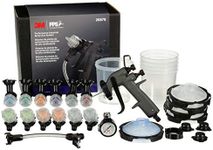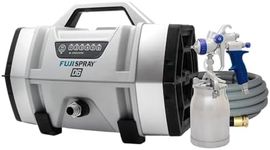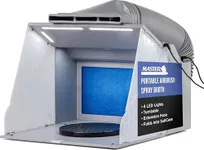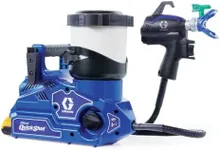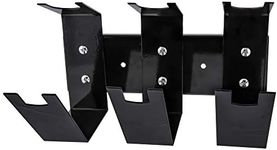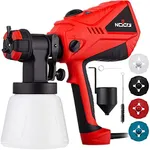Buying Guide for the Best Automotive Paint Sprayer
Choosing the right automotive paint sprayer can make a significant difference in the quality of your paint job. Whether you're a professional or a DIY enthusiast, understanding the key specifications of paint sprayers will help you make an informed decision. The right sprayer will provide a smooth, even coat of paint, save you time, and ensure a professional finish. Here are the key specifications to consider when selecting an automotive paint sprayer.Type of SprayerThere are different types of paint sprayers, including HVLP (High Volume Low Pressure), LVLP (Low Volume Low Pressure), and airless sprayers. HVLP sprayers are known for their precision and are ideal for detailed work, making them a popular choice for automotive painting. LVLP sprayers use less air and are suitable for smaller projects. Airless sprayers, on the other hand, are powerful and can cover large areas quickly but may not provide the same level of detail. Choose the type based on the size and detail of your project.
Nozzle SizeThe nozzle size determines the spray pattern and the thickness of the paint that can be applied. Smaller nozzles (1.2-1.4 mm) are ideal for fine finishes and detailed work, while larger nozzles (1.5-1.8 mm) are better for applying primers and base coats. For automotive painting, a nozzle size of around 1.3-1.4 mm is typically recommended for a smooth finish. Consider the type of paint and the finish you desire when selecting the nozzle size.
Paint Flow ControlPaint flow control allows you to adjust the amount of paint being sprayed. This feature is crucial for achieving a consistent finish and avoiding paint runs or sags. Look for a sprayer with easy-to-use flow control settings. If you are working on detailed areas or need to switch between different paint types, having precise control over the paint flow will be beneficial.
Cup SizeThe cup size refers to the capacity of the paint container attached to the sprayer. Smaller cups (less than 1 liter) are lightweight and easier to handle, making them suitable for detailed work or smaller projects. Larger cups (1-2 liters) can hold more paint, reducing the need for frequent refills, which is useful for larger projects. Choose a cup size that matches the scale of your project and your comfort in handling the sprayer.
Air Pressure RequirementsDifferent sprayers require different levels of air pressure to operate effectively. HVLP sprayers typically require lower air pressure (10-20 PSI), which helps reduce overspray and waste. Airless sprayers, however, operate at much higher pressures (up to 3000 PSI). Ensure that your air compressor can meet the pressure requirements of the sprayer you choose. Matching the air pressure to your sprayer's needs will ensure optimal performance and a high-quality finish.
Weight and ErgonomicsThe weight and ergonomics of the sprayer affect how comfortable it is to use, especially for extended periods. Lighter sprayers are easier to maneuver and reduce fatigue, while well-designed handles and grips can improve control and precision. Consider how long you will be using the sprayer and choose one that feels comfortable and balanced in your hand to ensure a pleasant painting experience.
Cleaning and MaintenanceRegular cleaning and maintenance are essential for keeping your paint sprayer in good working condition. Look for sprayers with easy-to-disassemble parts and straightforward cleaning processes. Some models come with cleaning kits or features that make maintenance easier. Consider how much time and effort you are willing to invest in cleaning and maintaining your sprayer when making your choice.
